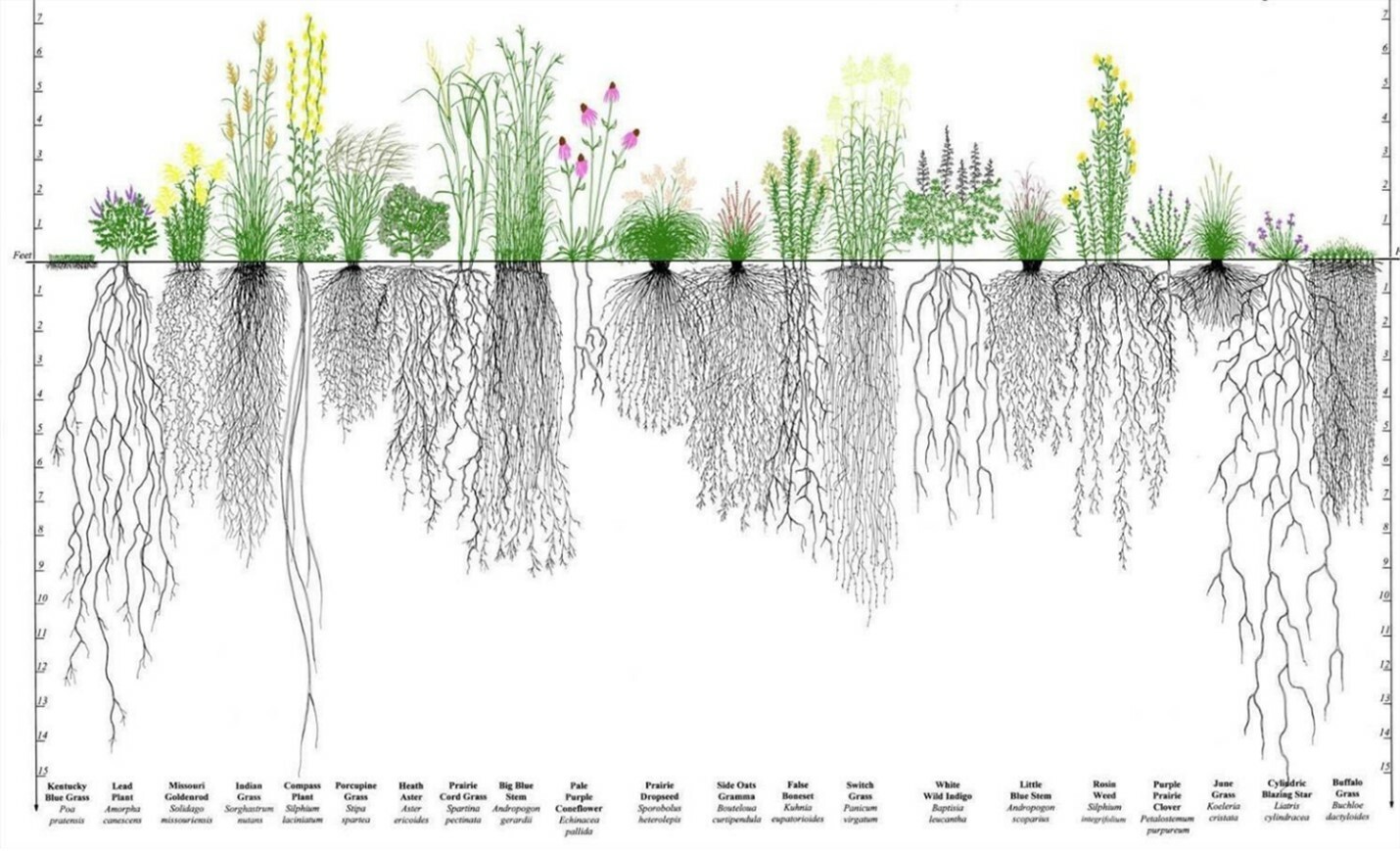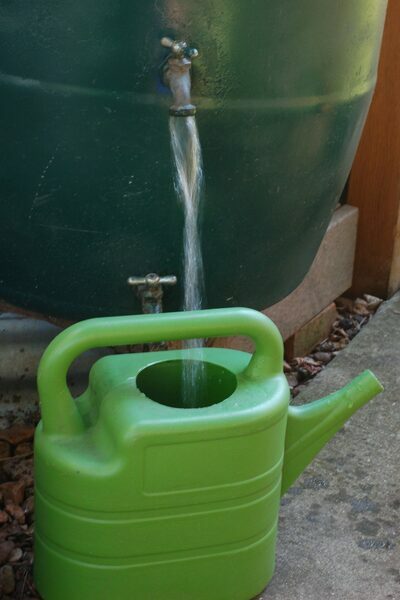Drier times, my gardening friends, are on the way. Rainstorms will become more intermittent. And if it is a typical summer, we won’t see an uptick in regular rainfall until we approach the end of August.
To boot, climate change scientists expect our dry spells to become more prolonged, interspersed with thundering downpours. While the latter may seem like good news, it’s little help for our parched yards. As soil dries out, it becomes less absorbent. So most of the rain from those deluges ends up pouring into storm sewers.
What’s a sweat-drenched gardener to do? Here are steps you can take to nurture your garden during the searing summer days ahead:
Go native! I know, I know. That’s my steady ‘drumbeat’ in this blog. That and urging you to remove more of your high-maintenance lawn. Ultimately, planting natives is one of the surest ways to garden successfully. Natives are used to the extreme weather variations we experience. They’ve evolved to survive drought by growing roots that extend deep into the soil to access moisture.
The chart below from the Conservation Research Institute demonstrates the incredible depths some native prairie plants roots extend—from four to more than 15 feet! Take note on the chart’s far left of the miniscule depth Kentucky Blue Grass roots extend—about four inches. A good chunk of the typical lawn is comprised of this ceaselessly thirsty grass.

A few words of caution: don’t plop a native plant into the ground and expect it will magically take care of itself. To establish vigorous root systems, natives will need regular watering
during the first couple of years. After that, they may only need watering during severe dry
spells.
Group plants with like-watering needs together. You need to consider more than sun exposure when placing plants. Whether a plant prefers wet, evenly moist or dry soil is a factor, as well. So make sure you group plants with similar moisture needs--it will make any watering you do more accurate and time-efficient. Keep in mind that some plants can handle multiple types of soil moisture. These are a good bet to mix in with plants that have one type of moisture requirement.
Plant your thirstiest plants closest to your home (and water source). If you love annuals or other ornamental plants that require regular watering, no sweat. Just make sure you plant them closer to where you can keep an eye on them and give them a regular drink. Several years ago, I planted Astilbe near our screened porch. Astilbe like soil that is consistently moist. Fortunately, our bird bath is nearby. When I change the bird bath water (using water from our rain barrel), I dump the old water on the Astilbes. Easy-peasy.
Water on the cheap. That water from your hose tap is becoming increasingly expensive. Besides installing a rain barrel, there are other simple ways to avoiding turning the tap on so often. For example, if you have a dehumidifier running in your house, you have a ready-made source of water for your garden. Boiling water when cooking? Let it cool off and then give your plants a drink.
Mulch is your plants’ first best summertime friend. In an ideal world, there wouldn’t be a need for mulch. We’d have every square inch surrounding our perennials, shrubs and trees planted with beautiful ground cover. While I love to plant ground cover that spread like ferns, sedges and wild ginger, it becomes very expensive and time-consuming to get bed edge to edge coverage.
So go ahead and put down a couple of inches of leaf or shredded-hardwood bark mulch around your plants. Don’t pile on too much bark mulch because it can become compressed and form a barrier to water absorption. And when mulching around trees, avoid piling up mulch around their base, creating what is commonly referred to as a ‘mulch volcano.’ This can create all kinds of headaches, even tree death over time.
Soaker hoses are your plants’ second summertime bestie. When you water your plants, you need to water the roots, not the foliage. Overhead watering is wasteful and for some plants can foster disease like mildew. The exception to the overhead watering rule is when you are using a sprinkling can and aiming for the plants’ roots.
Black rubber soaker hoses snaked amongst your plants are a great way to get water to the root zone. Soaker hoses are inexpensive and usually made from recycled rubber. Buried under your mulch, the only thing visible is the connection for your hose. Remember to mark the connections in a conspicuous way so you don’t lose track of them—as I have too many times!
Avoid covering your plants’ ‘feet’ with rock. Some people like the look of river or lava rock in their planting beds. One of the main benefits is that it won't need replenishing like leaf or hardwood mulch. Yet those rocks are soaking up and radiating heat, accelerating the drying of soil underneath. If you use rock to cover your plant beds, keep it at least a 12 to 18 inches away from the base of your plants. Then put down some mulch in that area instead. It’s a good idea to check the soil moisture at the base of these plants often, especially during prolonged hot weather when rocks will really heat up.
Not too much water, not too little. It hasn’t rained for two days, so I need to water, right? Not necessarily. Many a plant has ‘drowned’ because of overzealous watering. One way to determine if you need to water is to put wooden dowel in the ground. Where soil sticks to the dowel is where it will be moist. Soil should be moist to a depth of at least six inches. If your soil is sandy, and thus drains quicker, it should be moist from two to four inches down.
With a bit of forethought and diligence, you can ensure that your plants not only survive but thrive through the summer heat. Having read this far, you may be interested in some additional resources I’ve listed below. May I suggest that you peruse them in the shade with a cold drink in hand?
20 Drought-Tolerant Plants for a Beautiful Landscape
10 Easy Grass Lawn Alternatives
Landscaping Pros and Cons of Rock vs. Mulch
